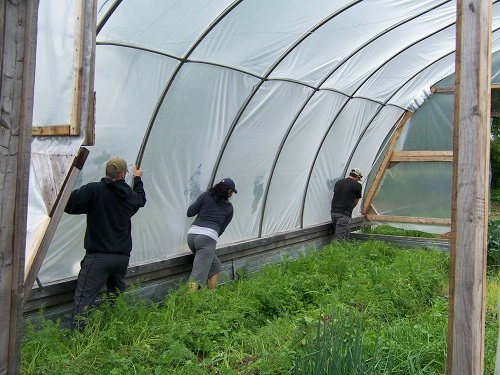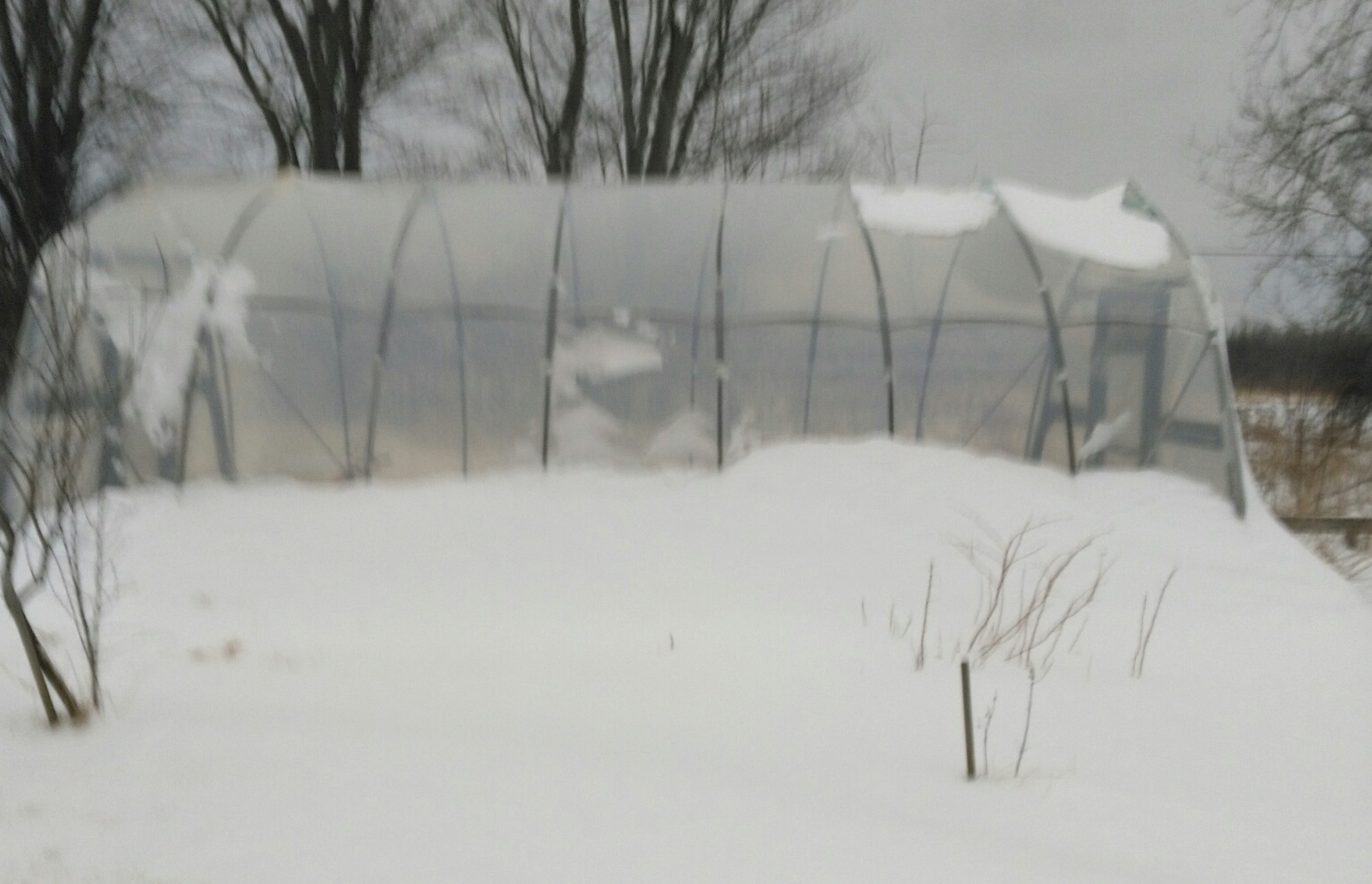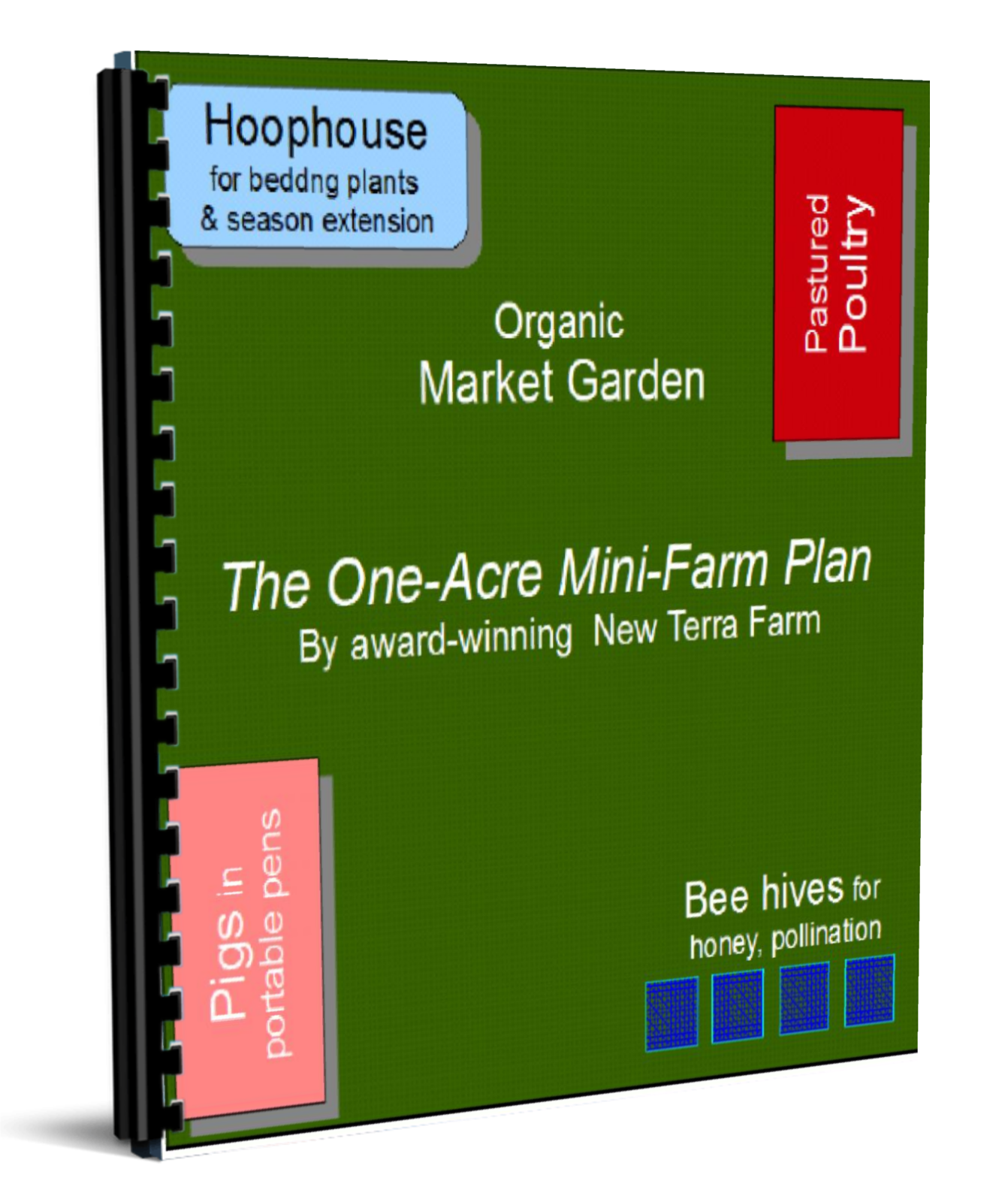You Need to Build a Greenhouse - Here's Why!
 The New Terra Farm crew repositioning our greenhouse on rails
The New Terra Farm crew repositioning our greenhouse on railsI’ve written before about the benefits of small greenhouses for small farms; small greenhouses are cheap to build, easy to manage and very productive.
One of the first thing we did as market gardeners was to build a greenhouse to grow our own transplants and direct-seed some early crops.
So I’m a big believer in season extension as an enabler of food sustainability and security. Here’s my main man Eliot Coleman:
“…to make a real difference in creating a local food system, local growers need to be able to continue supplying “fresh” food through the winter months”.
– Eliot Coleman, The New Organic Grower
But the 2017 season really brought the lesson home. You may know that the spring and summer of 2017 set some records for rainfall in Eastern Ontario.
The rains came, in quantity, and just didn’t stop.
Farmers in my area faced a number of challenges; fields too wet to work, and early crops that were successfully planted got drowned out.
I lost about 80% of my garlic due to flooding in a field that had never experienced that before.
The expression ‘make hay while the sun shines’ was a literal truth this year. I saw any number of fields with overgrown or cut-and-rained-on hay.
Some farmers were doing a first cut in August! Even when it wasn’t actually raining, the fields were too wet to put equipment in.
Build a greenhouse, save a season!
So (long story short), it rained a LOT. Naturally, this was the year Suzie and I decided to ramp up the market garden.
But, to bring it back to the topic at hand, our little greenhouses helped salvage our season. We were able to harvest enough to put something on the table each market day.
Even though water actually came up in the larger greenhouse (never saw that before!) we could still get in there and get some stuff in the ground, and have a presence at a farmer’s market I started. (Would have been embarrassing to be a no-show at my own market ;-)
Other growers at the market related similar stories. Whole field plantings not coming up, or drowning out. They too had greenhouses to help save the year.
I think that, going forward, getting more crops under cover is the answer to ‘weird weather’. It’s relatively cheap insurance. Crop extension is important, but crop protection is critical.
And, if you are selling at a market, getting in first with some crops is a big advantage. The early weeks at a market are ‘premium time’, and you will get better prices for your goodies.
That was true for us, and in fact for a few weeks we were the ONLY source for some veggies.
 April 15, 2018 - Spring in the Great White North
April 15, 2018 - Spring in the Great White NorthAnd lest you think 2017 was an outlier, check out the date on the above picture. The plants inside were OK, we added another layer of protection with row cover over the beds.
The time (relatively little) and money (relatively cheap) we invested in building and learning how to use our greenhouses have paid us back many times over.
You can learn more about that and build your greenhouses on the cheap with my Bootstrap Greenhouse book.
More like Build a Greenhouse . . .
New! My top choice for a hoop house kit to build your own greenhouse. Read my review here.
New! Build a Lean-To Greenhouse to start your plants and keep them thriving. Instructions to build a lean-to just like the first one I built at New Terra Farm.
Growing plants in a greenhouse is an excellent option for the small organic grower.
Even in a cold climate extending the garden season beyond what most people think is possible is very feasible. And you can do this without breaking the bank.
Floating row cover is made of a light spun polyester fabric, and is used for both frost protection and as a physical barrier against insects. You don't need a greenhouse to extend the season if you have Floating row cover the organic grower's best friend
I'm a big fan of small greenhouses. My greenhouses have more than paid me back for the time and money I spent in constructing them, and have made winter vegetable gardening much more practical. Here's why building a greenhouse is a great investment for a small farm.
You might think of a winter vegetable garden as only appropriate for those folks in the sun belt. But here at New Terra Farm (near Ottawa, 45-degrees latitude, zone 5A) we still have goodies growing as of November 1.
A backyard nursery can be a profitable home business for the new grower
or would-be small farmer. You can take advantage of this fact by growing and selling plants for money.
Every small farm should consider starting a greenhouse, for fun and profit!

Get my FREE One-Acre Farm Plan and learn how to pigs, chickens and more, integrated with an organic market garden, and a greenhouse to make more money from your small property.
Imagine building a profitable and sustainable mini-farm even on a small piece of land.
Enter your email address and your free report will be sent to you right away.
The BEST WAY to Get my Books...
Based on 20+ years of gardening and farming experience, I wrote some books that show you practical approaches to gardening and raising small livestock. If you want to fill your freezer and cold storage with your own healthy, nutritious food, and provide some real food security for your family, it might be worth a look here.
I just put together two special book deals:
- If you are a new 'country dweller' or homesteader (or soon to be), check out my Homesteader Book Bundle
- If you have ambitions to start a small mixed organic farm of your own, take a look at my Complete Start Farming Pack
- Return to Home page ›
- Build a Greenhouse